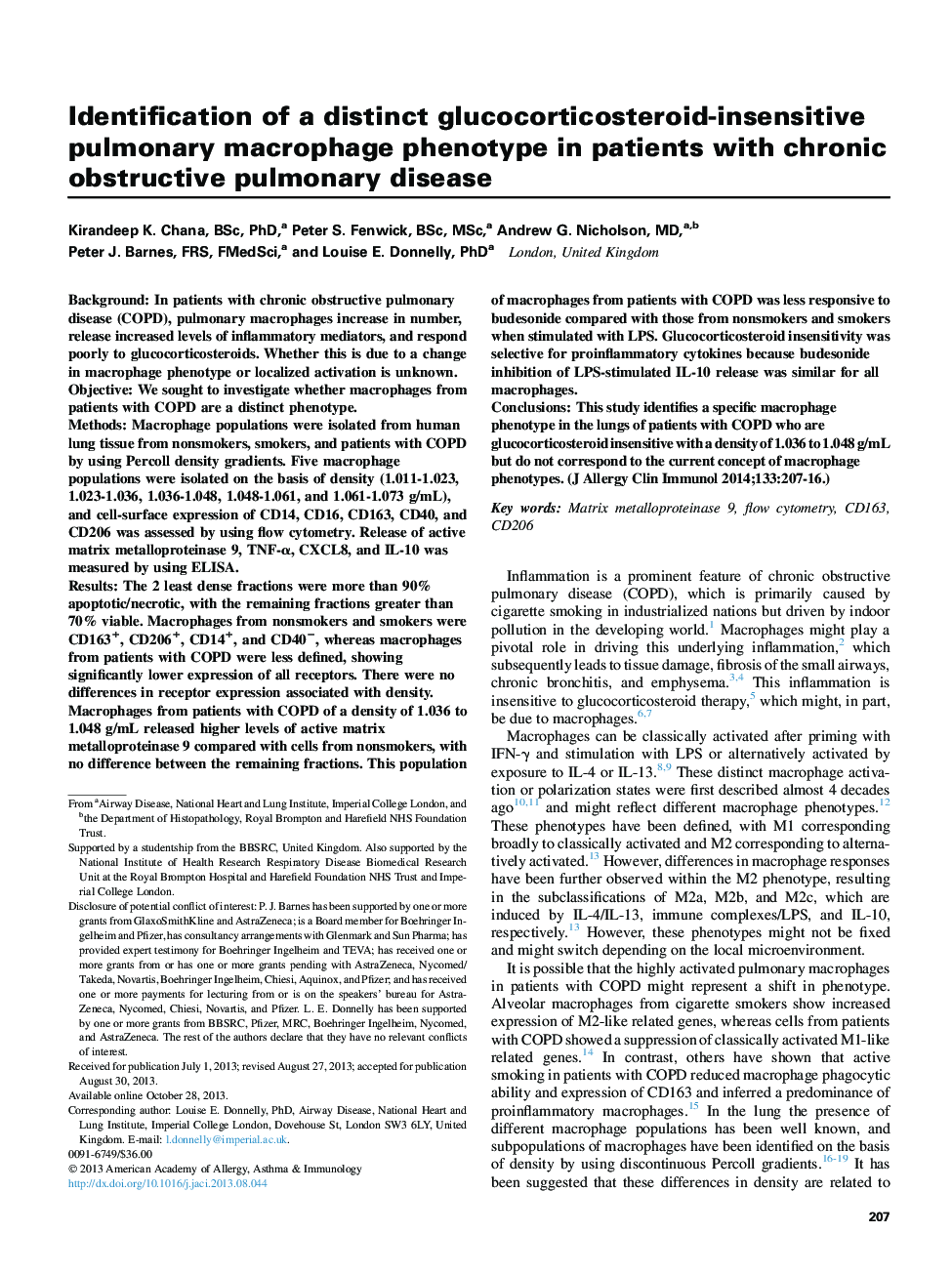| کد مقاله | کد نشریه | سال انتشار | مقاله انگلیسی | نسخه تمام متن |
|---|---|---|---|---|
| 6064890 | 1201865 | 2014 | 21 صفحه PDF | دانلود رایگان |
BackgroundIn patients with chronic obstructive pulmonary disease (COPD), pulmonary macrophages increase in number, release increased levels of inflammatory mediators, and respond poorly to glucocorticosteroids. Whether this is due to a change in macrophage phenotype or localized activation is unknown.ObjectiveWe sought to investigate whether macrophages from patients with COPD are a distinct phenotype.MethodsMacrophage populations were isolated from human lung tissue from nonsmokers, smokers, and patients with COPD by using Percoll density gradients. Five macrophage populations were isolated on the basis of density (1.011-1.023, 1.023-1.036, 1.036-1.048, 1.048-1.061, and 1.061-1.073 g/mL), and cell-surface expression of CD14, CD16, CD163, CD40, and CD206 was assessed by using flow cytometry. Release of active matrix metalloproteinase 9, TNF-α, CXCL8, and IL-10 was measured by using ELISA.ResultsThe 2 least dense fractions were more than 90% apoptotic/necrotic, with the remaining fractions greater than 70% viable. Macrophages from nonsmokers and smokers were CD163+, CD206+, CD14+, and CD40â, whereas macrophages from patients with COPD were less defined, showing significantly lower expression of all receptors. There were no differences in receptor expression associated with density. Macrophages from patients with COPD of a density of 1.036 to 1.048 g/mL released higher levels of active matrix metalloproteinase 9 compared with cells from nonsmokers, with no difference between the remaining fractions. This population of macrophages from patients with COPD was less responsive to budesonide compared with those from nonsmokers and smokers when stimulated with LPS. Glucocorticosteroid insensitivity was selective for proinflammatory cytokines because budesonide inhibition of LPS-stimulated IL-10 release was similar for all macrophages.ConclusionsThis study identifies a specific macrophage phenotype in the lungs of patients with COPD who are glucocorticosteroid insensitive with a density of 1.036 to 1.048 g/mL but do not correspond to the current concept of macrophage phenotypes.
Journal: Journal of Allergy and Clinical Immunology - Volume 133, Issue 1, January 2014, Pages 207-216.e11
